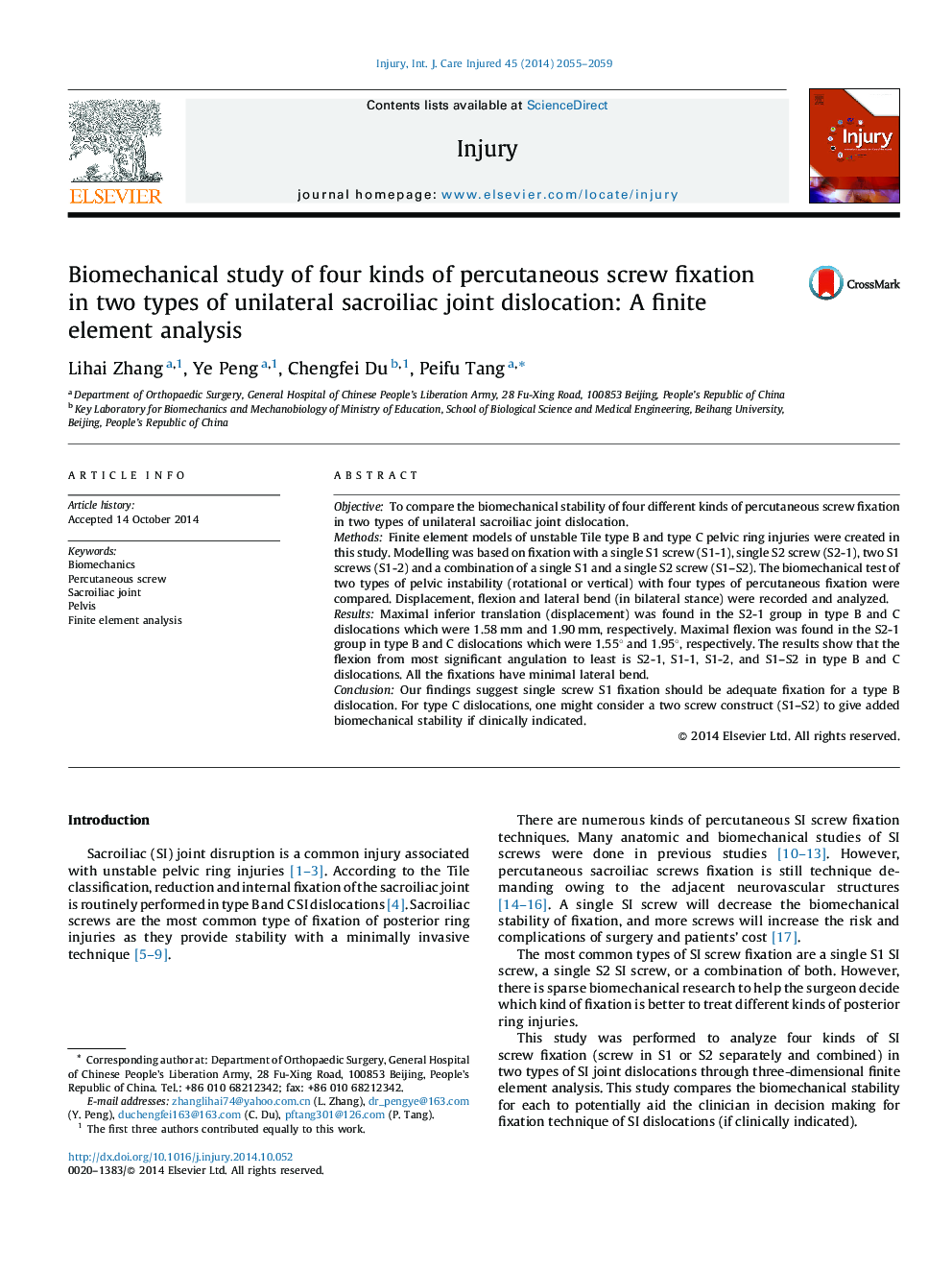| Article ID | Journal | Published Year | Pages | File Type |
|---|---|---|---|---|
| 6083780 | Injury | 2014 | 5 Pages |
ObjectiveTo compare the biomechanical stability of four different kinds of percutaneous screw fixation in two types of unilateral sacroiliac joint dislocation.MethodsFinite element models of unstable Tile type B and type C pelvic ring injuries were created in this study. Modelling was based on fixation with a single S1 screw (S1-1), single S2 screw (S2-1), two S1 screws (S1-2) and a combination of a single S1 and a single S2 screw (S1-S2). The biomechanical test of two types of pelvic instability (rotational or vertical) with four types of percutaneous fixation were compared. Displacement, flexion and lateral bend (in bilateral stance) were recorded and analyzed.ResultsMaximal inferior translation (displacement) was found in the S2-1 group in type B and C dislocations which were 1.58 mm and 1.90 mm, respectively. Maximal flexion was found in the S2-1 group in type B and C dislocations which were 1.55° and 1.95°, respectively. The results show that the flexion from most significant angulation to least is S2-1, S1-1, S1-2, and S1-S2 in type B and C dislocations. All the fixations have minimal lateral bend.ConclusionOur findings suggest single screw S1 fixation should be adequate fixation for a type B dislocation. For type C dislocations, one might consider a two screw construct (S1-S2) to give added biomechanical stability if clinically indicated.
